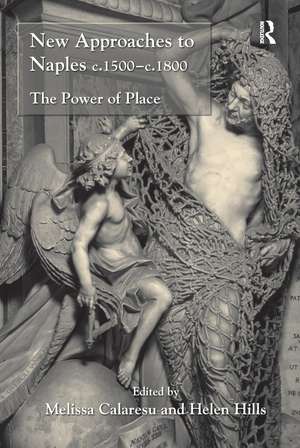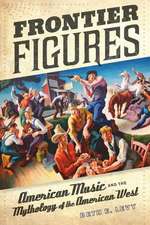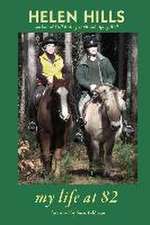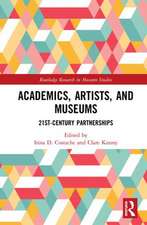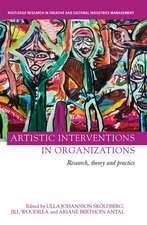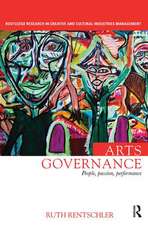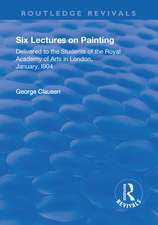New Approaches to Naples c.1500-c.1800: The Power of Place
Autor Helen Hills Editat de Melissa Calaresuen Limba Engleză Hardback – 31 oct 2013
| Toate formatele și edițiile | Preț | Express |
|---|---|---|
| Paperback (1) | 261.54 lei 6-8 săpt. | |
| Taylor & Francis – 14 oct 2024 | 261.54 lei 6-8 săpt. | |
| Hardback (1) | 824.17 lei 6-8 săpt. | |
| Taylor & Francis – 31 oct 2013 | 824.17 lei 6-8 săpt. |
Preț: 824.17 lei
Preț vechi: 1142.95 lei
-28% Nou
Puncte Express: 1236
Preț estimativ în valută:
157.71€ • 164.99$ • 131.01£
157.71€ • 164.99$ • 131.01£
Carte tipărită la comandă
Livrare economică 03-17 aprilie
Preluare comenzi: 021 569.72.76
Specificații
ISBN-13: 9781409429432
ISBN-10: 1409429431
Pagini: 286
Dimensiuni: 156 x 234 x 24 mm
Greutate: 0.69 kg
Ediția:1
Editura: Taylor & Francis
Colecția Routledge
Locul publicării:Oxford, United Kingdom
ISBN-10: 1409429431
Pagini: 286
Dimensiuni: 156 x 234 x 24 mm
Greutate: 0.69 kg
Ediția:1
Editura: Taylor & Francis
Colecția Routledge
Locul publicării:Oxford, United Kingdom
Public țintă
AcademicNotă biografică
Melissa Calaresu is Lecturer in History at Gonville and Caius College, Cambridge, UK. Helen Hills is Professor of the History of Art at the University of York, UK.
Cuprins
Introduction Between Exoticism and Marginalization: New Approaches to Naples, Melissa Calaresu, Helen Hills; Part I Disaster and Decline; Chapter 1 Myths of Modernity and the Myth of the City: When the Historiography of Pre-modern Italy goes South, John A. Marino; Chapter 2 Through a Glass Darkly: Material Holiness and the Treasury Chapel of San Gennaro in Naples, Helen Hills; Chapter 3 Contaminating Bodies: Print and the 1656 Plague in Naples, Rose Marie, San Juan; Part II Topographies; Chapter 4 Topographies of Poetry: Mapping Early Modern Naples, Harald Hendrix; Chapter 5 The Collection and Dissemination of Neapolitan Music, c.1600–c.1790, Dinko Fabris; Chapter 6 Landed Identity and the Bourbon Neapolitan State: Claude-Joseph Vernet and the Politics of the ‘Siti reali’, Helena Hammond; Part III Exceptionality; Chapter 7 The Architecture of Knowledge: Science, Collecting and Display in Eighteenth-Century Naples, Paola Bertucci; Chapter 8 Collecting Neapolitans: The Representation of Street Life in Late Eighteenth-Century Naples, Melissa Calaresu; Chapter 9 ‘Missed Opportunities’ in the History of Naples, Anna Maria Rao;
Recenzii
'... succeeds in addressing a number of pertinent issues ... provides a significant contribution to the study of Naples’s cultural history, because of the insights it provides, but even more so because of the questions it raises.' Renaissance Quarterly 'It will be hard to find a more qualitative and broad-ranging set of new studies on Naples, in which the contributors not only display a lucid understanding of the existing scholarly lacunae in the field, but also make a serious attempt to fill those by offering original, interdisciplinary and balanced accounts. The book will be of obvious interest to scholars of Naples, the Italian peninsula, early modern Europe and the Spanish Empire, but it will also be of relevance to anyone wishing to keep abreast of cutting-edge research in urban, cultural and art history.' Urban History 'This excellent book benefits from a high production value, including seven color plates, and that is likely to contribute to its deserved success.' Sixteenth Century Journal
Descriere
Early modern Naples has been characterized as a marginal place on the fringes of the European world. In recent historiography it has often been regarded as a city bypassed by the Renaissance and an emblem of cultural and political decline. Yet, as this volume makes plain, Naples is a city that deserves serious study. Contributions illuminate the historiographical pressures that have marginalized Naples and showcase important new developments in Neapolitan cultural and art history.
